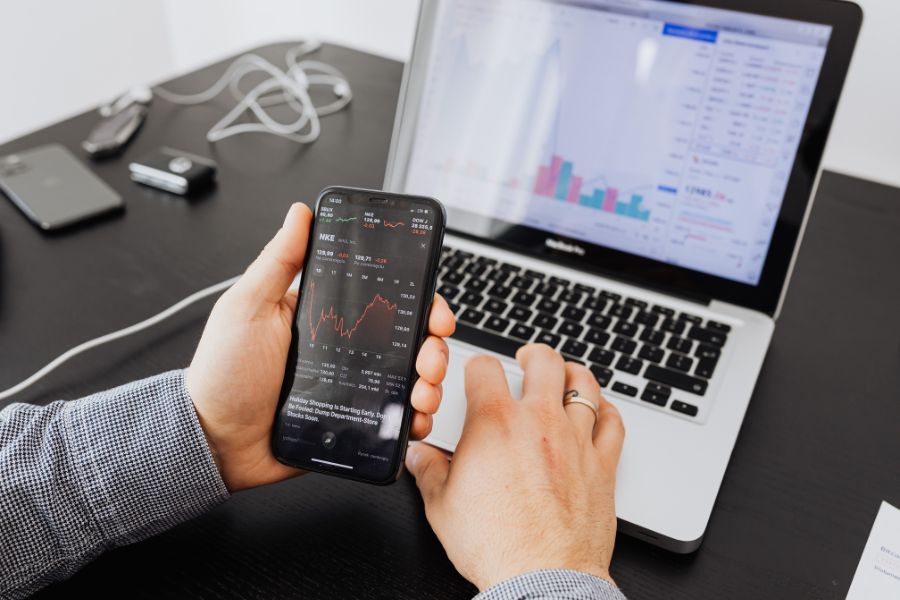Five years ago, I found myself completely overwhelmed by debt, barely scraping by. My bank account would flash red more often than not, and honestly, the stress of always being on the edge felt crushing. If you’ve ever struggled with money, you probably know that trapped feeling all too well.
But here’s the thing—getting from broke to financial freedom in just five years is possible. It’s not magic, but a mix of the right mindset shifts, a solid plan, and a lot of discipline. I didn’t stumble into a windfall or have any secret advantages. My journey was messy, full of mistakes, and, yeah, a few small wins that made all the difference.

I started making smarter choices with my budget. I chipped away at debt, found new ways to earn, and started investing—even if it was just a little at first. Over time, those tiny actions added up. Looking back, I realize consistency mattered way more than any one big decision.
Key Takeaways
- Set clear goals. Build strong foundations with budgeting and saving.
- Tackle debt and find multiple ways to make money.
- Invest consistently—let time and smart decisions work their magic.
Facing Rock Bottom: My Broke Beginnings
Five years ago, debt had me by the throat and I couldn’t see a way out. My credit card debt kept growing, and just paying for groceries felt like a challenge.
Recognizing Financial Struggles
One morning, I opened my banking app and saw I had $47 left. That was it.
Three credit cards sat maxed out at $15,000. Student loans added another $32,000. Minimum payments alone devoured 60% of what I brought home.
Paycheck to paycheck became my world. I avoided checking my balance because, honestly, it made me feel sick. Back then, personal finance just seemed like a foreign language.
Even simple shopping trips turned into math exercises. I’d count every item to make sure I didn’t go over $50. If I needed gas, I’d sometimes have to skip lunch. My credit score dropped to 580, so forget about getting approved for anything.
Confronting Debt and Living Expenses
I sat down and listed out my monthly expenses:
| Expense Type | Monthly Amount |
|---|---|
| Rent | $800 |
| Credit card minimums | $450 |
| Student loan payment | $280 |
| Utilities | $120 |
| Food | $200 |
| Total | $1,850 |
After taxes, I made $2,100 a month.
That left just $250 for everything else—car repairs, emergencies, you name it. Any little surprise could send me spiraling back into debt.
Expenses kept creeping up, but my income didn’t budge. At the rate I was going, just making minimum payments meant I’d be in debt for nearly half a century. No joke.

I finally admitted to myself: something had to give. Borrowing from tomorrow to pay for today was a losing game.
Setting a Clear Path: Defining Financial Freedom Goals
Getting out of that hole started with setting real, specific goals. I realized if I didn’t know what I was aiming for, I’d never get anywhere.
Determining My Financial Freedom Number
First up, I needed to figure out my “freedom number”—the amount I’d need to live without worrying about work.
I used the 25x rule. Multiply your yearly expenses by 25, and that’s your target. For me, with $42,000 a year in expenses, I’d need about $1,050,000.
My numbers looked like this:
- Monthly expenses: $3,500
- Annual expenses: $42,000
- Freedom number: $1,050,000
I thought about different levels—just covering the basics, or having enough for travel and fun. Having a real number made the dream feel possible.
Crafting a Tailored Financial Plan
Next, I broke my big goal into smaller, doable steps.
I set three types of goals:
- Short-term (1 year): Build a $10,000 emergency fund
- Medium-term (3-5 years): Pay off debt and save $100,000
- Long-term (10+ years): Hit my full freedom number
I set up automatic savings of $800 a month, planning to bump it up by $100 each year. I tracked everything in a simple spreadsheet—it wasn’t fancy, but it worked.
A financial advisor helped me pick investments that made sense for me. That advice made my plan feel a lot more solid.
Identifying Motivating Factors for Change
Money alone didn’t motivate me. I needed reasons that mattered.

My main drivers:
- Freedom from stress: I wanted to stop worrying about bills.
- Family security: Making sure my kids’ futures were safe.
- Career choice: Working because I wanted to, not because I had to.
- Time freedom: More time for people and things I love.
I wrote these down and read them every week. I pictured my ideal life—no alarm clocks, no stress, just freedom.
That mental picture made skipping takeout or saying no to new gadgets way easier.
Building Foundations: Budgeting, Saving, and Managing Money
Three things changed my life: tracking every dollar, building an emergency fund, and slashing unnecessary expenses.
Mastering Budgeting and Tracking Spending
My first real budget opened my eyes. I listed every income source and tracked my spending for a month.
I couldn’t believe it—$200 a month on coffee and takeout? Ouch.
I used the 50/30/20 rule:
- 50% needs (rent, groceries, utilities)
- 30% wants (fun stuff, eating out)
- 20% savings and debt
I picked a free app that linked to my bank account and sorted my expenses. Every Sunday, I’d check in for 15 minutes. It wasn’t glamorous, but it kept me honest.
I wrote down every single purchase, even the small ones. That’s when I realized how much the little things added up.
Saving Aggressively and Creating an Emergency Fund
Saving became my top priority. I started with just $25 a week.
My first goal? A $1,000 emergency fund. It was small, but it meant I didn’t have to reach for my credit card every time life threw a curveball.
Here’s how I filled up that fund:
| Strategy | Monthly Savings |
|---|---|
| Automatic transfers | $200 |
| Side gig income | $300 |
| Tax refunds | $150 |
| Loose change jar | $25 |
I opened a separate high-yield savings account. Keeping my emergency fund at a different bank made it harder to dip into.
After hitting $1,000, I aimed for three months of expenses. It took a year and a half, but the peace of mind was worth every sacrifice.
Cutting Expenses and Living Below Your Means
I took a hard look at my spending. Subscriptions I forgot about? Gone. I hunted for cheaper options everywhere.
Housing and transportation were my biggest wins. I downsized my apartment and switched to public transit. No car meant no car payments or insurance headaches.

Food was another biggie. I started meal prepping on Sundays and brought lunch to work. That alone saved me $300 a month.
For non-essentials over $50, I waited 24 hours before buying. Most of the time, I’d forget about it.
Automating good habits made things easier. I set up automatic transfers and used cash envelopes for groceries and fun.
I didn’t want to live miserably. I just made sure my money lined up with what mattered most.
Eliminating Debt and Managing Financial Setbacks
Getting rid of debt took grit and a plan. I also needed help when life threw me curveballs.
Strategies for Paying Off Debt
I listed every debt I had. Credit cards: $18,000 across four cards. Student loans: $32,000.
The debt snowball method worked best for me. I paid minimums everywhere except my smallest debt, throwing every extra dollar at that one.
My first win? Paying off a $1,200 store card in three months. That felt amazing and kept me going.
I called my credit card companies and asked for lower rates. Three out of four said yes, dropping my interest from 24% to 18%. That call saved me hundreds.
Automation helped a ton. I set up automatic payments for minimums plus extra on my target debt. Less temptation, more progress.
My student loans qualified for income-driven repayment, dropping my payment from $340 to $180. I used that savings to attack credit card debt.
Overcoming Unexpected Challenges
Year two, my car broke down—$2,800 repair bill. Thanks to my emergency fund, I covered $1,000. The rest came from weekend gigs for six weeks. It set me back a couple months, but I didn’t add new debt.
Year three, I lost my job. Four months with no main income. My emergency fund kept me afloat.
I called my creditors right away. Most offered payment breaks or smaller minimums. Being upfront kept my credit score safe.
Side hustles saved me. Freelance writing and dog walking brought in $800 a month. I stuck with those even after getting a new job.
Medical bills hit out of nowhere—$1,500 for an ER visit, even with insurance. I called the hospital and set up a payment plan instead of using credit cards.
Seeking Support and Financial Guidance
Meeting with a financial advisor cost me $200, but it was a game changer. She helped me balance paying off debt with saving for retirement.
Free credit counseling from a nonprofit gave me new strategies. They looked at my budget and found places I could cut back.
Online communities kept me motivated. Reddit’s personal finance threads and debt-free Facebook groups connected me with people who got it.
I read three personal finance books that honestly changed my thinking. “Your Money or Your Life” made me rethink every dollar. “The Total Money Makeover” gave me a step-by-step plan.

My sister became my accountability partner. We checked in every week about our budgets. Having someone in my corner made quitting a lot harder.
A tax pro found me bigger refunds, which I threw at my debt. Later, a career coach helped me negotiate an $8,000 raise.
Growing Income and Building Wealth Through Multiple Streams
Building multiple streams of income was my breakthrough. I realized that relying on just one paycheck was risky.
I started picking up side hustles. I turned hobbies into cash, like turning my passion project into a real business.
Diversifying my income brought stability—and sped up my progress way more than I ever expected.
Launching Side Hustles and Side Gigs
I kicked off my first side hustle with freelance writing. Most nights and weekends, I squeezed in articles for clients and pulled in an extra $500 that first month. My day job stayed put, but my bank account finally started to budge.
I scoured my area for in-demand skills. Writing, tutoring, and delivery gigs practically begged for new people. None of them needed much money upfront, which was a relief.
Popular side gigs I tried out:
- Freelance services (writing, design, consulting)
- Delivery driving (food, packages, rideshare)
- Online tutoring and teaching
- Pet sitting and house sitting
- Selling products online
Starting with just one side gig helped me avoid burning out. Once I got the hang of it, I slowly layered on others, which built up a few income streams without making me miserable. My freelance work alone eventually paid out $1,200 a month—way more than I’d hoped for.
I treated every side business like it mattered. I set a schedule, tracked my spending, and put profits right back into growing the hustle.
Exploring Entrepreneurial Opportunities
I’ll be honest, entrepreneurship intimidated me at first. To keep the risk low, I started with drop-shipping. I spent hours researching products before launching my little store.
I looked for problems I could actually solve with my skills. That led me to launch a digital marketing consultancy for small businesses in my own town.

Business opportunities I gave a shot:
- Service-based consulting
- Online course creation
- E-commerce store
- Local service business
- Digital product sales
My consultancy began with one client who paid $800 a month. Six months later, I landed five clients and brought in $4,000 each month.
I poured profits back into better tools and marketing. That entrepreneur mindset let me scale faster than any job would have.
Every business, even the flops, taught me something about customer service, marketing, or managing money.
Turning Passion Into Income Streams
One day, I realized my photography hobby could actually pay. I shot weddings on weekends and earned $300 to $800 per gig.
Cooking became another money-maker. I sold meal prep services to busy professionals, adding $600 a month to my income streams.
Ways I turned my interests into cash:
- Photography services for events
- Cooking and meal prep business
- Fitness coaching and training
- Craft and handmade product sales
- Teaching workshops and classes
The best part? I genuinely loved the work. My photography business grew through word-of-mouth, which felt pretty amazing.
I kept tabs on which passions paid off the most. Photography and cooking stood out—each one brought in over $1,000 a month.
Because I loved these passion-based gigs, they felt sustainable. I got paid, but I also felt fulfilled.
Investing for Financial Independence and Lasting Wealth
Smart investing turned out to be the engine behind my journey from broke to financially free. Building wealth doesn’t happen by accident—you need a strategy, the right mix of investments, and accounts that work for you.
Creating an Effective Investment Strategy
I kept my investment strategy simple at first. Over time, it got stronger as I learned. I realized that clear goals and a plan matched to my timeline were non-negotiable.
I set targets: $10,000 invested by year two, $50,000 by year five. Having those numbers made the goal feel real.
I stuck to the 10-15% rule for investing. When I earned $3,000 a month, I put away $300-450 monthly. It felt doable and built my confidence.
My investment priorities, in order:
- Emergency fund first (3-6 months of expenses)
- Knock out high-interest debt
- Invest consistently every month
I picked a basic three-fund portfolio: 70% stock index funds, 20% international stocks, 10% bonds. That mix gave me growth but didn’t leave me exposed.
Dollar-cost averaging quickly became my go-to. I invested the same amount each month, no matter what the market did. It took the emotion out of everything.
Leveraging Stocks, Bonds, and Index Funds
Index funds changed my whole perspective. Instead of picking stocks or paying huge fees, I got instant diversification.
I zeroed in on low-cost index funds with expense ratios under 0.20%. My favorites? Total stock market funds and S&P 500 index funds. I loved knowing I owned a slice of hundreds of companies.
Bonds brought some stability to the mix. I used bond index funds for that fixed-income piece. Sure, they didn’t grow as fast, but they softened the blow when stocks dropped.

I only let individual stocks take up 5% of my portfolio. I bought companies I actually understood—think Apple and Microsoft. It scratched the itch without risking my future.
My asset allocation by year:
| Year | Stocks | Bonds | Cash |
|---|---|---|---|
| 1-2 | 60% | 30% | 10% |
| 3-5 | 80% | 15% | 5% |
I checked in every quarter and rebalanced if things got out of whack. When stocks soared, I’d sell a bit and buy more bonds. It forced me to buy low and sell high, even if it felt weird.
Using Retirement Accounts: 401(k) and Roth IRA
Retirement accounts became my secret weapons. The tax perks made every dollar stretch further.
I maxed out my employer’s 401(k) match first. That was free money—I couldn’t say no. My company matched 50% of the first 6% I contributed, so I got an instant 3% return.
My 401(k) game plan was simple: target-date funds or low-cost index funds. Each year, I bumped my contribution by 1% until I hit 15% of my income.
The Roth IRA turned into my favorite. I put in $6,000 every year ($500 a month). My money grew tax-free, and I could pull out contributions if I really needed to.
I used the Roth IRA for aggressive growth. No taxes on gains? I loaded up on stock index funds and growth investments.
Traditional vs. Roth comparison:
- Traditional: Tax deduction now, pay taxes later
- Roth: No deduction now, tax-free withdrawals later
I picked Roth because I figured taxes would be higher when I retired. Plus, the flexibility kept me sane during lean years.
Generating Passive Income from Assets
Passive income became my ticket to real freedom. I focused on investments that paid me, no extra work required.
Dividend stocks laid the foundation. I bought shares in companies with 20+ years of dividend growth. Those payments just kept climbing, beating inflation.

Real Estate Investment Trusts (REITs) gave me a slice of property income without the hassle. I went with REIT index funds that paid 3-4% in dividends each year.
My passive income sources:
- Dividend stocks: $200/month by year 5
- REIT dividends: $100/month by year 5
- Bond interest: $50/month by year 5
I always reinvested dividends back in. Compounding did its thing and sped up my wealth building.
High-yield savings accounts helped too. I kept my emergency fund in accounts paying 4-5% interest, which earned $15-25 a month for doing nothing.
By year five, my assets kicked off $350 a month in passive income. That covered my groceries and gave me proof that financial freedom wasn’t just a dream.
Frequently Asked Questions
People ask me the same questions all the time about going from broke to financially free. Here’s what I’ve learned from my own journey and what actually worked.
What are the key steps to achieve financial freedom within five years?
Let’s break it down. I focused on five steps that changed my life.
First, I calculated my financial freedom number: annual expenses times 25. If you need $50,000 a year, you’ll want $1.25 million invested. That’s the 4% rule, plain and simple.
I built multiple income streams. I kept my job, started a side business, and invested in index funds.
I saved 50-70% of my income by avoiding lifestyle inflation. Whenever I got a raise, I saved it instead of upgrading my life.
I stuck with low-cost index funds instead of chasing hot stocks. Consistency won out over trying to time the market.
The 80/20 rule became my compass. I focused on the few actions that gave me most of my results. Working smarter, not just harder, made all the difference.
How to maintain motivation and discipline during a long-term financial transformation?
Motivation comes and goes, but I kept going by writing down my “why” every morning. I reminded myself what financial freedom would actually change for me.
I set smaller milestones to celebrate along the way. Tracking my net worth each month and cheering every $10,000 jump kept me going.
Automating my savings helped me sidestep willpower. Money hit my investments before I could spend it.
Finding a community made me accountable. I joined online groups where people shared their progress and setbacks.
Each night, I reflected with three questions: Did I focus on what mattered? Where did I waste time? How can I do better tomorrow?
Can you share success stories of women who achieved financial freedom in 5 years?
Sarah, a friend of mine, cleared $30,000 in debt and hit $200,000 net worth in five years. She started a freelance marketing business while holding down a full-time job.
Sarah saved 60% of her income by living with roommates and cooking at home. She put everything into index funds and real estate crowdfunding.
Lisa, another woman I know, built a blog that made $5,000 a month in passive income. She picked one niche and created digital products.
Lisa reinvested her blog profits into dividend stocks. By year five, her investments covered 70% of her living expenses.
They kept at it, stuck to their plans, and didn’t get distracted by get-rich-quick schemes or rough patches.
What are the risks of rapid financial strategies and how can they be mitigated?
Trying to get rich fast almost cost me big. I nearly lost $10,000 chasing crypto trends in my second year.
Fast-track strategies usually mean high risk or unsustainable hours. Both can lead to burnout and losses.
I learned to spread out my investments. I never put more than 5% into any single risky bet.
Setting realistic timelines kept me from making desperate choices. Five years might sound long, but it’s actually fast for building real wealth.
I kept six months of expenses in a high-yield savings account. That emergency fund saved me from selling investments when things got tough.
Building valuable skills outlasted any shortcut. My earning power stuck around longer than any wild investment gain.
How important is a personal fitness journey in contributing to financial success?
My fitness journey made a surprising impact on my finances. Better health meant fewer doctor visits and more energy for side gigs.
Exercise kept my stress in check, so I made smarter money choices. I stopped stress-shopping once I had healthier habits.
Working out early built discipline that spilled over into my finances. Turns out, the habits that build muscle also build wealth.
I saved money by working out at home. YouTube videos and bodyweight moves were free.
Better sleep from exercise improved my focus at work. That led to a promotion and a 25% salary bump in year three.
Getting fit boosted my confidence, which helped me negotiate higher freelance rates. Physical wins gave me the mental edge too.
What are comprehensive strategies for staying financially disciplined as a teenager?
Honestly, I wish I’d picked up these habits back in high school. If you start young, compound interest becomes your secret weapon.
First off, try tracking every dollar you spend for a month. There are free apps for this, and you’ll be surprised where your money actually disappears. Don’t beat yourself up—it’s just information.
Whenever you get cash from a part-time job or birthday gifts, stash away at least half. Seriously, open a high-yield savings account that’s a little tricky to dip into. It makes saving less tempting to skip.
Every month, challenge yourself to learn one new financial skill. Maybe read a personal finance book or binge a few YouTube videos. I didn’t realize until later that knowledge can compound just like your savings.
Resist the urge to buy stuff just to look cool or fit in. Most of us wasted too much on trendy clothes or the latest tech, and honestly, it wasn’t worth it.
Think about starting a side hustle that actually excites you. I’ve seen teens rake in cash selling handmade crafts online or tutoring kids in their neighborhood. It’s more doable than you think!


